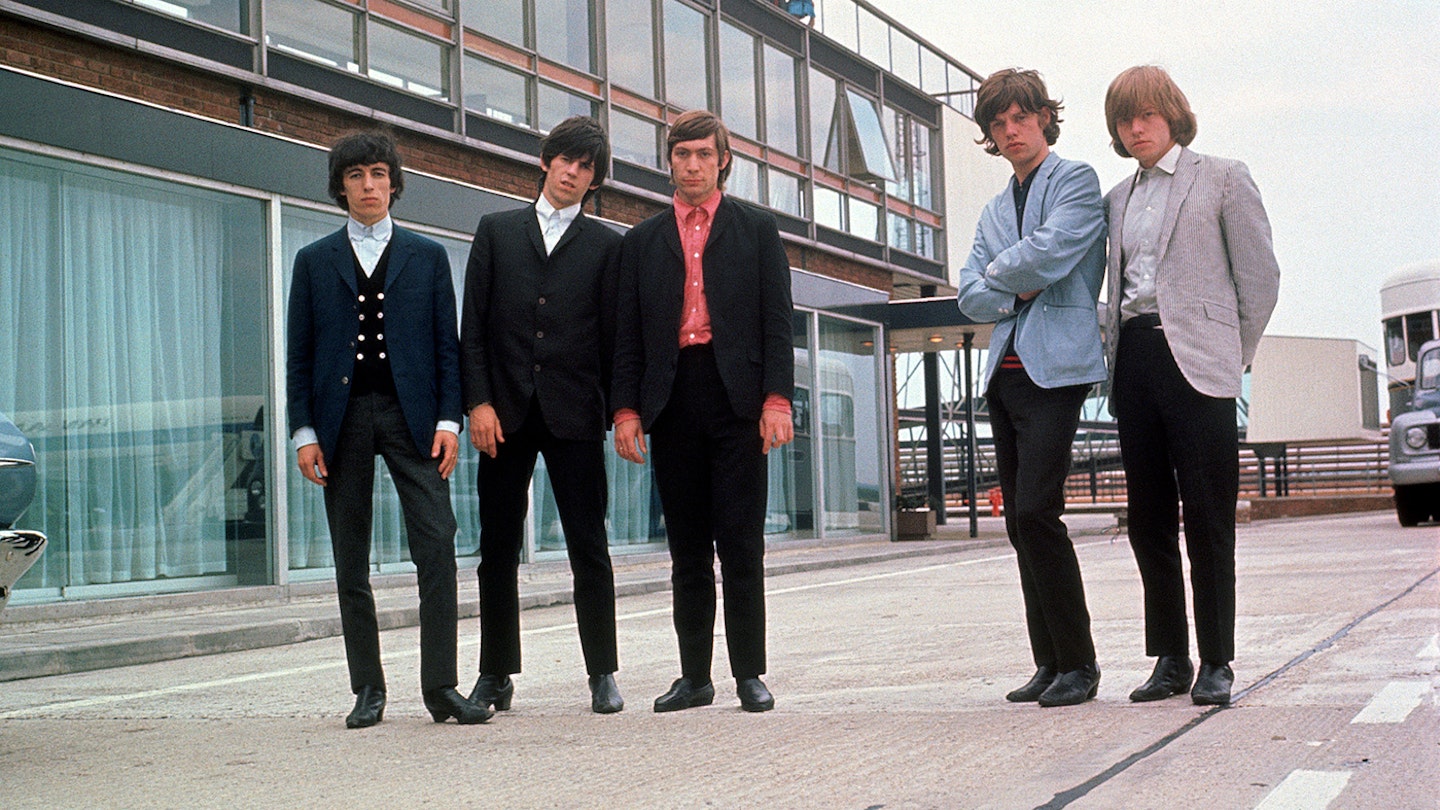From the start, The Rolling Stones polarised opinion. No surprise, then, that when their debut album came out in April 1964 The Daily Herald, the old national newspaper of the left, called it “a stinker”, while the New Musical Express advised readers that it was “probably the finest first LP ever” by a rock band, eulogising its “frenetic primal magnificence”.
-
READ MORE: Keith Richards interviewed: "We're born to have fun, if you take it too seriously you're fucked."
The group’s manager, Andrew Loog Oldham, loved the conflict and stoked it with cynical glee. Controversy was the crux of his garish sleevenote statement that “The Rolling Stones are more than just a group – they are a way of life”. He stirred it some more when he persuaded Decca to release it untitled, with not even the band’s name on the front cover, just a stark photo of the five men glowering at the camera.
The pose was better prepared than the album itself, which caught the Stones at the end of their apprenticeship and entering their first significant period of transition. The band both relished making the LP and lacked material to fill it. The previous autumn, Oldham had notoriously locked Mick Jagger and Keith Richards in the flat the three shared in Mapesbury Road in north-west London, until they wrote a song, but they still had hardly anything that worked in a context of rugged R&B standards. Tell Me was the only Jagger/Richards composition available. Although a nicely lugubrious, lewd-innocent lament, it represented a hint of the future, no more. So the rest of the LP was drenched in history.
Oldham knew little about recording, but he produced it because that was his fantasy: to be like Phil Spector. He had the gall and the balls; he scared off the old guard from Decca, and he made it happen even though he had to learn on the two-track Revox at Regent Sound, Denmark Street – described by top ’60s producer Shel Talmy as “a shithole with egg boxes up to the ceiling for sound baffling”.
Their triumph flowed from playing the music on gut instinct. Essentially, they pulled the best from their live set, which meant it was all about R&B: Jimmy Reed (who had a US hit with Honest I Do in 1957), Slim Harpo (I’m A King Bee, 1957), Muddy Waters (I Just Want To Make Love To You, 1954) and Rufus Thomas (Walking The Dog, 1963).
Through passionate – and failed – imitation, they found themselves, as when Jagger slurs “Don’t you know that I love you?” at the start of Honest I Do, sincere and still sneering because, even before he was a star, he had no other way to admit vulnerability. Or else when Charlie Watts sets his inner beat to ‘dark and ruthless’ for I’m A King Bee’s leery come-on. And totally when they step beyond the imperious frustration of Muddy Waters’ original and all tear at I Just Want To Make Love To You, hormones gushing. The cut to double speed in the middle eight is all theirs and it still sweats.
Their excursions into soul won less respect at the time. It’s true that Can I Get A Witness (Marvin Gaye, 1963) was Oldham’s notion for a possible single. Jagger didn’t know the words and was sent running over to the publisher’s office in Savile Row to pick up the sheet music. But with Ian Stewart providing angry locomotion on piano, the Stones as petulant victims – “It hurts me so inside to see you treat me so unkind” – are every bit as convincing as Gaye and the Motown studio maestros.
-
READ MORE: The Rolling Stones In Mono Reviewed
It’s much the same process on You Can Make It If You Try; their performance dumps the grandeur of gospel singer Gene Allison’s 1957 original in favour of dirt and doubt (as that’s all they knew).
Black rock’n’roll probably presented fewer problems, given Richards’ obsession with Chuck Berry and his firm grasp on the Bo Diddley riff. There’s a carefree cool about their guitars-ablaze, go-faster Route 66, Carol and Mona (listed on early sleeves as I Need You Baby). Oldham claimed that Phil Spector played on the Stones’ cover of Buddy Holly’s Not Fade Away – another song with the Bo Diddley beat – released as a stand-alone single in February 1964. It was just his little joke but Spector and his pal Gene Pitney really did come to the rescue on the last day of recording, February 4. Knowing the band from their January tour with The Ronettes, they dropped in at Regent Sound for a social afternoon and walked into a crisis. The album was still way under the requisite 30 minutes.
Pitney produced a bottle of cognac. Spector took Jagger and a guitar out on to the stairs. Ten minutes later they came back with Little By Little – Jimmy Reed’s Shame, Shame, Shame shamelessly reupholstered – and within half an hour they’d hammered out an R&B moan, one foot in the cottonfields, the other in a London coffee bar. (Pitney played piano and Spector rattled a half-dollar in the now-empty brandy bottle – or “maracas” as the sleevenotes have it.)
Much relieved, they filled the remaining space with a variant on the jam they played in every live set – jamming was a good thing back then, it proved you could “really play”. This one spun off from the chords of their Marvin Gaye cover, as candidly declared by the title, Now I’ve Got A Witness.
The Stones’ crude equipment produced a raw sound. A young band, who couldn’t yet express themselves through songwriting, looked backwards and to black America for their inspiration. But their character burned through with a dark depth and truth that had never before been heard from young Englishmen.
“A first album can be incredible,” Keith Richards later reflected. “All that energy… unbelievable!”
